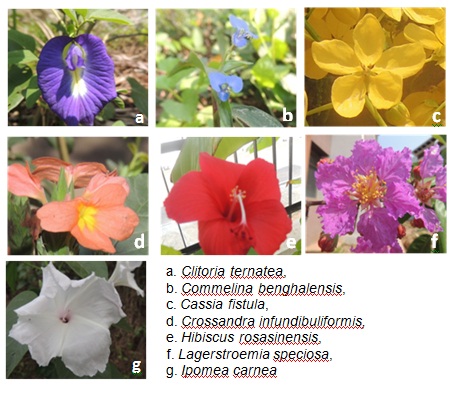Flowers are Bill boards that plants use to attract pollinators. Floral coloration is the result of combined effect of light scattering by irregularcell complexes and wavelength selective absorbing pigments. Incoherently scattered light in the complementary wavelength determines the color of petals. Deciphering flower color from a pollinator perspective is pivotal to floral biology, pollination studies and landscape ecology.Floral radiometry presents a straightforward biophysical means to characterize landscapes and monitor temporal changes.
Potentials of radiometric studies of flowers were extensively discussed by Sir C.V. Raman during the 1960s.Whilst extensive studies have been carried out on flower color and plant pigments using light transmission technique (spectroscopy), there hardly exist any study on floral reflectionin India. However numerous studies have been reported internationally. Here the authors present the findings of the first radiometric studies offlowers in India.

The study was carried out in Trivandrum, Kerala, India. Floral spectral reflection of 121 species of flowering angiosperms was measured in a dedicated campaignduring February-March 2016.Situated between 8°17'N and 8°54'N latitudes and 76°41'E and 77°17' E longitudes, Trivandrum enjoys a tropical climate. The region falls in the Malabar phytogeographical provinceand harbors over 5000 species of flowering plants spread across 1500 genera and over 200 Families.
Floral spectral reflectance were measured using hand-held spectroradiometer (Analytical Spectral Device, Inc. ASD Inc.Field spec® 3).It records continuous reflected spectra from 350 nm to 2500 nm. All measurements were taken in fully open, healthy flowers. The field campaign was intentionally done on sunny days between 10:00 and 11:30 AM.Each floral spectral value recorded was a mean of 50 iterations aggregated across 15 samples of each species.Standard white reference correction was performed for each sample before and after recording. All reflectance spectra were processed using ASD View spec Pro for further analysis.